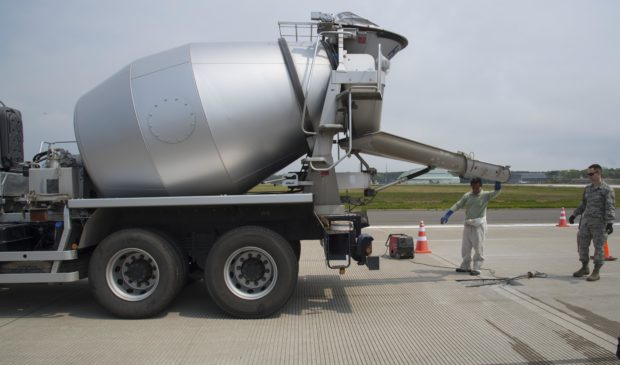Carbon-reducing concrete could come to Austin
Monday, July 1, 2019 by
Jessi Devenyns Concrete is the second-largest industrial producer of carbon dioxide in the world, according to the International Energy Agency. Yet it is still one of the most popular building materials.
Tom Ennis, the sustainability officer with the Watershed Protection Department, told the Environmental Commission at its June 19 meeting that Austin need not continue to contribute to the growing greenhouse gas emissions caused by concrete. In fact, the city could sequester carbon dioxide while still building with concrete.
Low-carbon concrete from CarbonCure Technologies is a type of concrete that is just as strong as the conventional version but uses 5 percent less cement in the concrete mix. Carbon dioxide gas is injected into cement. Once the concrete hardens, it permanently traps carbon dioxide from escaping into the atmosphere.
Developers of various sorts currently use 5.75 million tons of concrete annually in Central Texas. Replacing all of that concrete with CarbonCure concrete would sequester 36,000 metric tons of carbon dioxide a year from the atmosphere. That is the equivalent of removing 8,000 cars from the road for a year.
And this is no experimental technology: “It’s not just Ph.D. researchers in a lab doing research,” Ennis noted. The Illinois Department of Transportation is using CarbonCure technology and the city of Calgary in Canada will be using it to build and upgrade its airport.
“It sounds like a no-brainer,” said Commissioner Katie Coyne.
Although the idea was appealing to the commissioners, Luke Kimble with CarbonCure explained that contractors in Texas are not particularly motivated to switch. “They’re making money, they don’t need to be looking at another technology at this point,” he said. As a result, no one in the state of Texas has switched over.
Buoyed by the possibility of becoming the first Texas city to use this technology, the Environmental Commission unanimously recommended that Council explore implementing some pilot programs using CarbonCure concrete.
“This is something where we should be going, whoopee!” said Commissioner Mary Ann Neely.
Ennis cautioned the commissioners that making this change is not going to be a cure-all.
“Is all of the sudden climate change ends and the world celebrates?” he said. “No.” But it is a step in the right direction.
U.S. Air Force photo by Airman 1st Class Sadie Colbert.
The Austin Monitor’s work is made possible by donations from the community. Though our reporting covers donors from time to time, we are careful to keep business and editorial efforts separate while maintaining transparency. A complete list of donors is available here, and our code of ethics is explained here.
You're a community leader
And we’re honored you look to us for serious, in-depth news. You know a strong community needs local and dedicated watchdog reporting. We’re here for you and that won’t change. Now will you take the powerful next step and support our nonprofit news organization?


